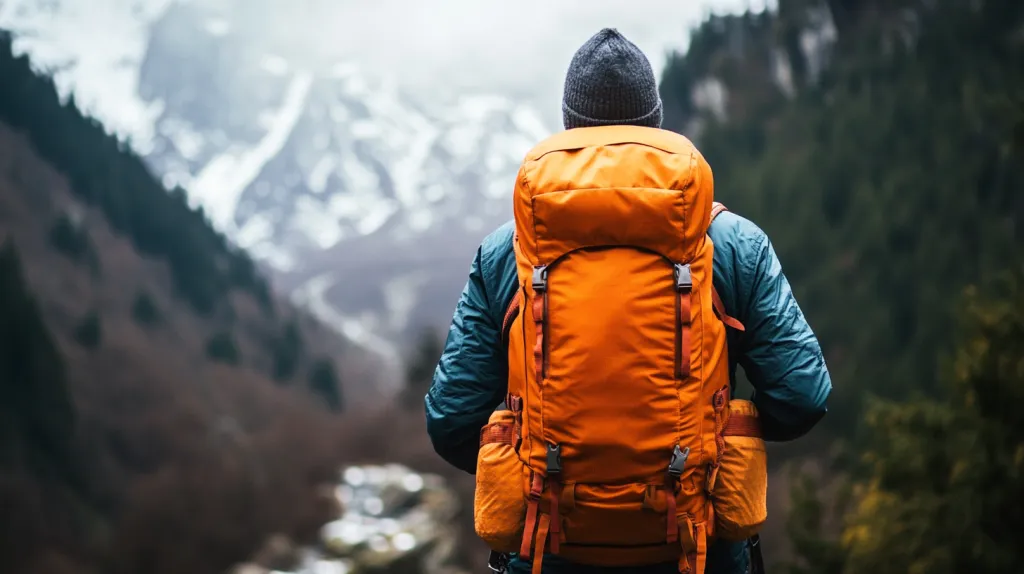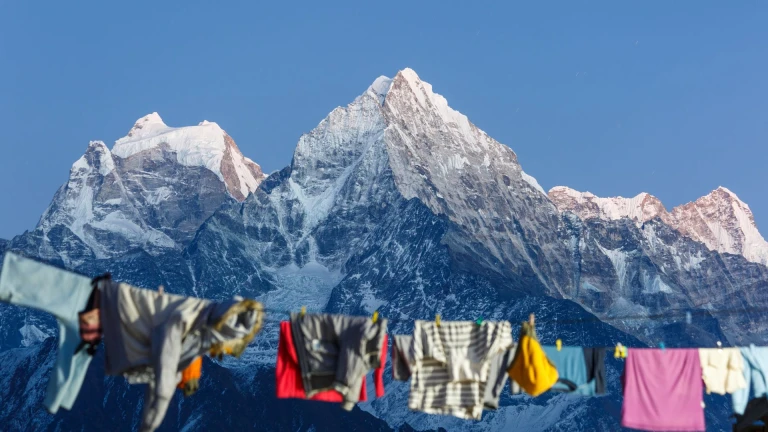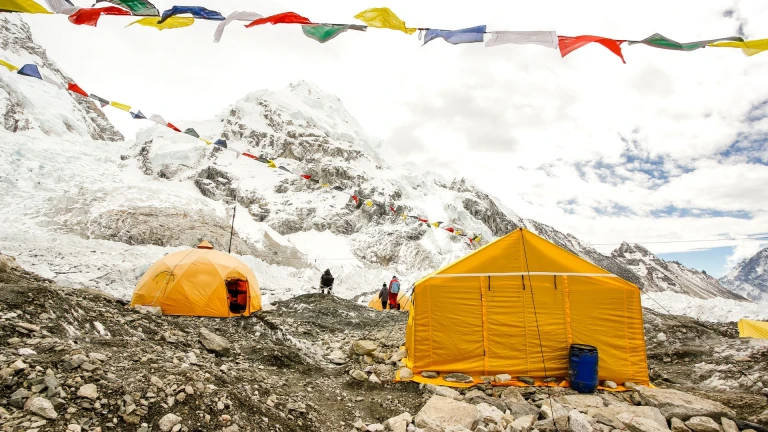Everest Base Camp Trek: Everything You Need to Know

Everest Base Camp (EBC) - the name itself conjures images of breathtaking Himalayan peaks, Sherpa villages nestled amidst towering mountains, and the thrill of confronting the world's tallest mountain. But before you lace up your boots and book your flight to Kathmandu, here's a deep dive into everything you need to know to plan your Everest Base Camp trek.
Also Read: 10 Most Difficult Treks in India for the Adventure Hearts
The Challenge and the Reward:
This trek is not for the faint of heart. It's a high-altitude adventure, with Everest Base Camp sitting at a staggering 5,364 meters (17,598 feet) - an elevation that can cause altitude sickness if not approached carefully. The distance is substantial too, with the round trip clocking in at roughly 130 kilometers (81 miles). While the daily sections are manageable (think 8-10 miles), the key to a successful trek is acclimatization. This means taking rest days scattered throughout your itinerary, allowing your body to adjust to the thin mountain air and build red blood cells to cope with the reduced oxygen levels.

Preparing for Success:
Don't underestimate the importance of getting ready for this trek. Here are some crucial aspects to consider:
Physical Fitness: This trek demands a good level of physical fitness, with strong legs and a good cardiovascular system being essential. Regularly incorporate activities like hiking, running, and lunges into your training plan. Aim to build your stamina to comfortably walk for several hours with a daypack.
Gear: Invest in good quality hiking boots with proper ankle support. They should be waterproof and comfortable for long days on the trail. For clothing, pack layers that you can easily add or remove to regulate your temperature. Thermals, a good down jacket, and a waterproof shell are crucial. Don't forget a sturdy backpack that comfortably fits all your essentials and allows for proper weight distribution.
Acclimatization: As mentioned earlier, acclimatization is vital. Many treks incorporate built-in acclimatization days, where you'll spend an extra night at a particular altitude to allow your body to adjust. These days often involve short hikes or hikes to viewpoints to maintain fitness while prioritizing acclimatization.
Planning Your Trek:
When to Go: The trekking season falls between spring (March-May) and autumn (September-November). Spring offers clear skies and stunning mountain views, while autumn boasts pleasant temperatures with less chance of rain or snow. However, keep in mind that both seasons are peak times, so expect larger crowds on the trail.
Permits and TIMS: You'll need a special permit to trek in Sagarmatha National Park, which houses Everest Base Camp. These permits are typically obtained through your chosen trekking company. Additionally, acquire a Trekkers' Information Management System (TIMS) card for registration purposes. This can be done online or upon arrival in Nepal.
Guided vs. Independent Trek: This trek can be done independently, but for first-timers, a guided trek is highly recommended. Guides provide invaluable knowledge of the region, navigation expertise, and ensure safety on the trail. They can also help you acclimatize properly and deal with any altitude sickness issues that may arise.
Beyond the Hike:
The EBC trek offers more than just the iconic base camp. Picturesque villages like Namche Bazaar, a bustling Sherpa trading center, and Tengboche, with its iconic Tengboche Monastery perched on a hilltop, add cultural richness to your journey. You can even push yourself further and hike up Kala Patthar (5,643 meters), a challenging but rewarding side trip that offers a once-in-a-lifetime panorama of Everest, Lhotse, Nuptse, and the surrounding Himalayan giants.
 Also Read: Complete 7 days Itinerary for Amarnath - Himalayan Adventure
Also Read: Complete 7 days Itinerary for Amarnath - Himalayan Adventure
Embrace the Adventure:
The Everest Base Camp trek is a challenging yet rewarding experience. With careful planning, preparation, and the right mindset, you can conquer this legendary trail and witness the majesty of the Himalayas firsthand. Remember, this trek is all about the journey, not just the destination. Embrace the challenges, soak in the stunning scenery, and learn about the unique culture of the Khumbu region. It will be an experience you'll never forget.
Published at
About Author
Manya Shastry
Subscribe our Newsletter
Get our weekly tips and travel news!
Related Posts
10 Adventures to Try in India This Monsoon 2025
Gear up for 10 thrilling monsoon adventures across India in 2025 and experience nature’s wildest moments like never before.
10 Amazing Things to Do in Thailand That Indians Often Miss
Thailand has a secret side beyond its beaches—think floating bungalows, pink lotus lakes, and hidden caves waiting for Indian travelers.
10 Best Adventurous Places in Hyderabad - 2024
Hyderabad adventure: Explore ancient forts, trek through lush hills, and experience thrilling water sports. Discover the hidden gems of this historic city.
10 Best Adventurous Places near Bangalore - 2024
Thrill-seeking adventures near Bangalore!
10 Best Free Treks Near Bangalore - 2024
Discover 10 free treks near Bangalore for adventure seekers! Explore hills, caves, and forts without breaking the bank. Hike, explore, and recharge.
Latest Posts
5 Lakes Near Bangalore for Picnic and Day Outings This Weekend
Looking for a peaceful weekend escape? Discover five serene lakes near Bangalore perfect for picnics, scenic drives, and relaxing day outings.
7 Things to Do in Jaipur for First-Time Visitors in 2025
Explore Jaipur in 2025! 7 must-see spots: Amber Fort, Hawa Mahal, City Palace, Nahargarh Fort, Jantar Mantar, Chokhi Dhani, & lively bazaars.
7 Traditional Tea Estates in Assam You Can Visit and Stay At
Wake up to misty mornings and the aroma of fresh tea in Assam’s lush plantations. Stay, sip, and unwind at seven traditional tea estates steeped in heritage and calm.
5 Butterfly Hotspots in South India for Nature Lovers This Spring
From Karnataka’s misty rainforests to Kerala’s eco-parks and the serene Nilgiri hills, explore five breathtaking butterfly hotspots where nature paints her most delicate masterpiece.
5 Heritage Food Walks in Hyderabad for Biryani Lovers
Ready for the ultimate Biryani feast? Discover 5 heritage food walks in Hyderabad to taste the city's royal history and famous cuisine!

